A Date with the Ansel Adams of Railroad Photography
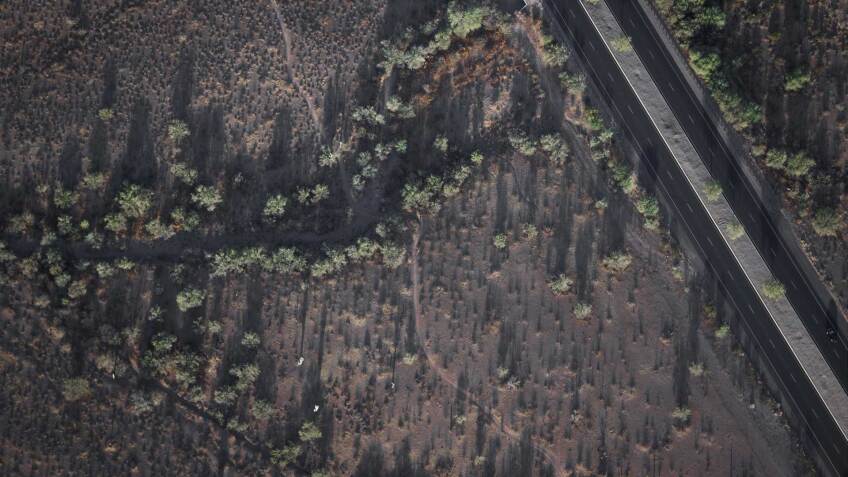
The following article is edited and re-published from California Desert Art, a doorway to the rich bohemian world of early desert artists.
Ed. Note: Staged in a crater near Amboy, Shirley Burman Steinheimer’s story tells of her first date with Richard Steinheimer. It was a prelude to one of the great untold romances of the desert. Shirley's late husband was one of the legendary railroad photographers of all time and has been called the "Ansel Adams of Railroad Photography." Shirley also is an accomplished railroad photographer and has advanced the story of women in railroading through her research and writing.
Folks are drawn to the desert for many reasons — to study nature, to work for the State or Federal Parks trying to preserve it, to prospect, or even to hide from the law. I was none of the mentioned. In the mid-1970s, I was a novice desert visitor itching to go back to touch, photograph and take in the ambiance. In 1977, the opportunity came: a photography workshop in the Mojave Desert near the Kelso Dunes area. I hung out there every spring for three years.
I had at last found heaven, but also there was a bonus — Union Pacific’s railroad depot at Kelso. In 1978, I had just been hired by California State Parks to photograph the construction of a new railroad museum being built in Sacramento along with the restoration of all the railroad equipment. I had a natural curiosity about the depot and the trains that stopped there but thank heavens the State did not hire me for my knowledge of railroads as I had little then. At Kelso, I watched trains and workers in action, but that is another whole story. This is about the desert, but more importantly —my future.

At the same time I was in the Mojave, there was another photographer, Richard Steinheimer, who was roaming the same desert but photographing the Santa Fe that followed close to Route 66. Our paths never crossed in the three years I took the workshops, and then my desert journeys ended, at least for a while.
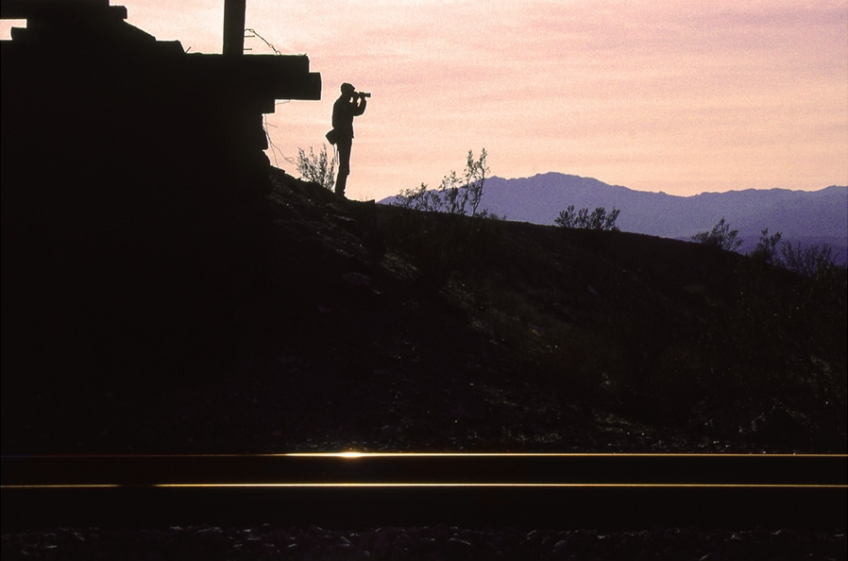

The next few years, I was busy working for the State’s new museum. However, I didn’t forget my wonderful days in the desert. I wished I could find a kindred spirit who also liked hanging in the desert, and if I was lucky, also liked photography. I lived and worked in Sacramento, so the chances of meeting someone who fit the bill was like counting the grains of sand in one of the sand dunes I photographed — not likely to happen.
But on April 15,1983, everything changed. The California State Railroad Museum — now opened — held a reception for a railroad photographer, Richard Steinheimer, who had a new exhibit on display. As the evening wore on, I noticed every time I looked up, Mr. Steinheimer seemed to be looking my way. We spoke several times that evening, and I was surprised to find we had many common interests. At the close of the reception, he invited me to join him and others for dinner. I couldn’t go. So we exchanged business cards, and he said he’d call. My first thought as I floated on air going home was I’d probably never hear from him. At the time of our meeting, I was not aware of his reputation as an internationally known railroad photographer; all I felt was my heart racing when he spoke. There was such a kindness in his baritone voice and a gentle manner, all 6 ft. 6 inches of him. You could say I was smitten, and I didn’t think that was possible, being a 49-year-old divorcee.
Imagine my surprise to find a call from him on my answering machine just two days later. I returned his call that evening, not knowing that he had already started writing a letter to me. We must have talked for two hours. He finished his letter anyway and to my surprise mailed it, a treasure I still hold dear.
He wrote the following:
Hello, again. Fun to talk with you. You actually sound too good to be true. Come on, now, who else loves the desert, trains, photography and sleeping out??? A rare, and for me, a delightful combination...<br> <br> My life is typically unstructured, so I shouldn’t have any trouble much with<br> <br> preconceptions of getting to know you. It’s always fun to see how the “movie” of life rolls on with its usually delightful surprises. Things work out for the best.<br> <br> Stein
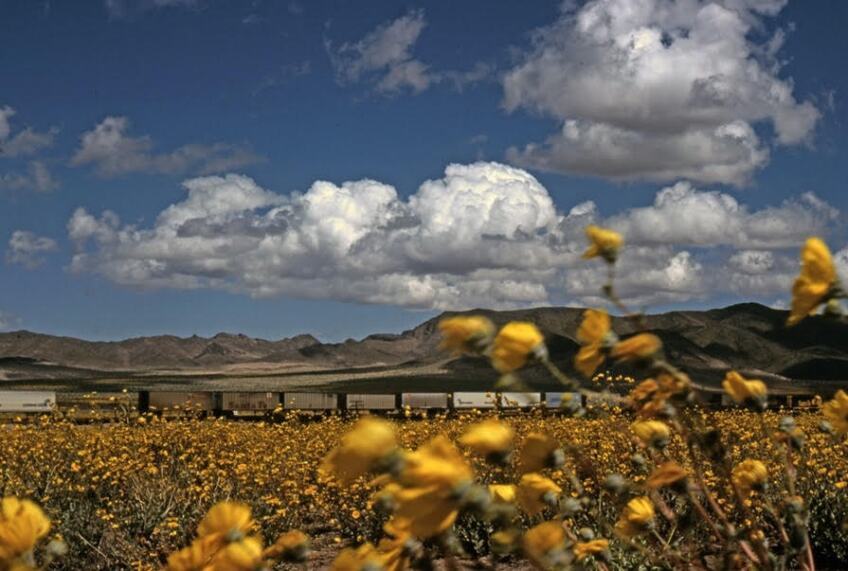
Dick wrote:<br> <br> . . . we still greatly treasure the often-arduous long distance photo trips we make on assignments for clients or for stock pictures . . . Our personal approaches to photography could hardly be more different.<br> <br> Shirley approaches our photography trips from a relaxed vacation viewpoint. She seeks to enjoy the few comforts of travel she can find between the times she is taken by me to an endless number of unheard of, remote, off-the-edge-of-the-world railroad locations where she will have no preconceived idea of what to expect or photograph. Or any idea of where she is. Making it more confusing, we often arrive on locations at night, ready to shoot at first light.<br> <br> One of Shirley’s native talents is that she quickly adapts to such situations by imitating a space traveler fallen onto a strange planet. With no ideas or knowledge of where she is, she simply starts exploring around the vehicle — working outward in her search for new subjects of interest. The pictures she makes at these times are almost always original and interesting, images that illuminate the details of a location a normal person would not see.
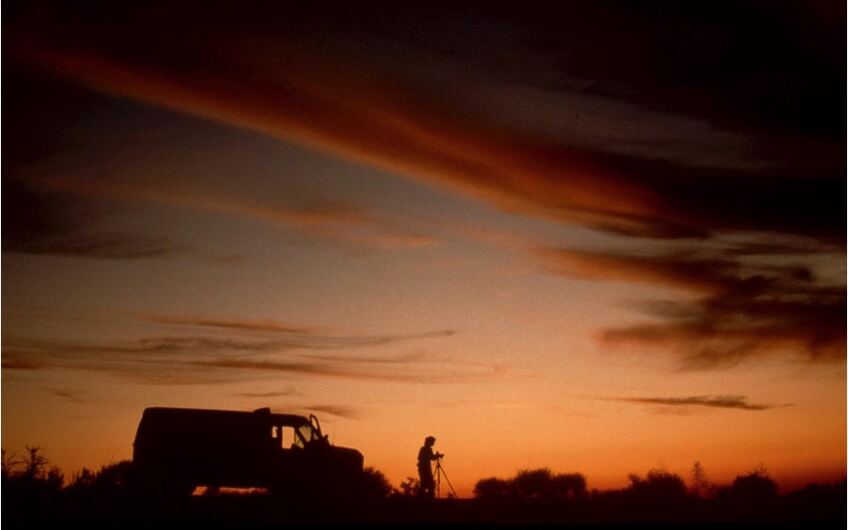
My first reaction —“HERE?”
“Ok,” I thought, “I like adventure, wherever it takes me.”
Before pulling into our "lodging" for the night, I remembered it had been a good day, and I was lucky enough to “capture a few trains,” challenging new subjects from my usual fare. I know dusk is a great time to photograph, but I was ready to unwind after an arduous first day. I arranged my sleeping bag on the mattress. Dick had flopped down in the back of the van. We sat on the rear of the van watching passing trains for a while, and Dick, a born storyteller, began to spin his yarns; the first of many was about our desert lodging.
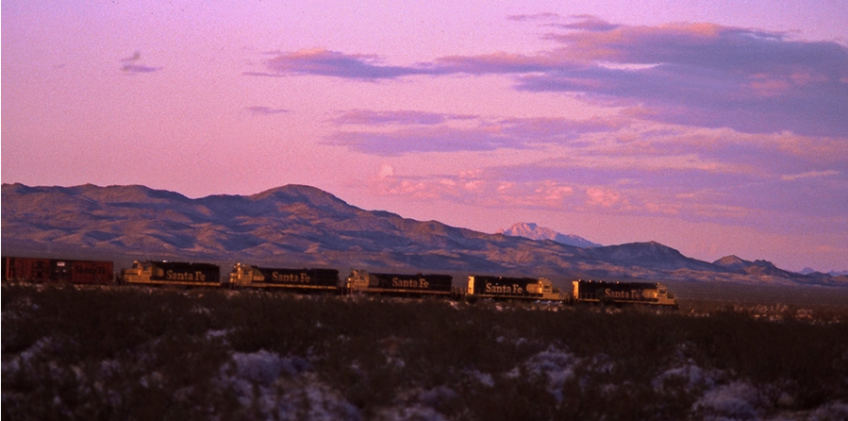
<i>Shirley, did you know that Amboy and the desert we are “camped” in is the lowest and hottest portion of the Mojave crossing between Needles and Barstow? But more importantly, that the NASA Mariner I & II, in 1976 sent back information about Mars soil samples finding later that soil tests performed on Mars indicated that the volcanic soil of nearby Amboy Crater was the most similar on earth to that of the Red Planet?</i>
“Wow, my first desert date, and I’m sleeping on Mars! I’d better remember to take a souvenir rock as a reminder of this date!”
Without missing a beat, the storytelling goes on. Next, it was about friends seeing black towers of swirling mating termites near a dumpsite in Twentynine Palms then next I’m hearing about the time an elephant pulled a stuck truck out of the sand near Amboy. I was ready to call it a day and said, “Goodnight!”
I climbed into my sack, and since it was a warm evening, Dick left the rear doors slightly ajar to catch a desert breeze where our heads rested. Thinking back after years of traveling with him, I think he wanted to listen for the throbbing noises of locomotives westbound going up the grade to Ash Hill, while the eastbound trains' dynamic braking made a whining and screeching noise going downhill.
No critters or space aliens bothered us during the night, and only a few freight trains passing in the distance broke the night’s silence.
As the morning’s first light of dawn drifted in through the cracked open rear doors, I felt moisture on my face and realized it was sweat. The sun was peeking over the Bristol Mountains, and the temperature was moving up and fast. Dick was still sound asleep, so I got up and decided to explore around the small crater rim while waiting for him to awaken. But he kept on sleeping, and I kept on sweating. Finally, I gingerly woke him up, and he responded with a few grunts and grumbles that surprised me. Thinking: “There goes the happy ending to finding my Prince!” However, I had to assert myself at that point and managed to blurt out that I was miserable and did not want to have a heat stroke while waiting for him to get up. After photographing another passing train, we climbed into the front seat and drove away from our crater and back onto the highway, passing a hitchhiker that I wouldn’t let Dick pick up, and he was mad all over again.


I began to doubt my sanity about going off to no-man’s land with a man I’d only known about five weeks. The desert sun can do strange things to you, such as make you think you’ll disappear and never be seen again. “What do I do if Dick goes stir crazy from the heat?” Momentary thoughts darted through my head. Luckily, we were only a short distance from the cafe. I reminded myself that he had a sterling reputation. However, there was a slight chill in the air and not much conversation as we drove the mile or two to Roy’s Cafe at Amboy. I intended to call the highway patrol to pick up the hitchhiker from there. As we pulled in, I looked around, and there was a highway officer with the man we had passed coming in right behind us. Thank heavens during breakfast our first small disagreement faded, and I felt a bit more relaxed. Also, Dick never grumbled at me again.
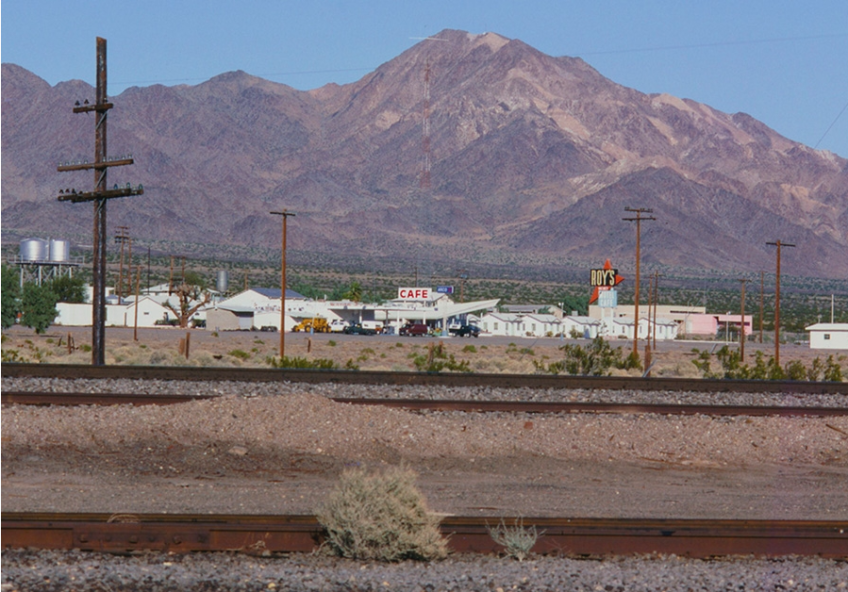
Amboy was a small town established around 1883 as one of a series of railroad stations constructed across the Mojave by the predecessor to the Santa Fe Railway: the Atlantic & Pacific Railroad. As one might expect, there was a population explosion after Route 66 opened in 1926. Roy’s Cafe and Motel opened in 1938 and was a real oasis, as there was next to nothing out along that stretch of the highway. In 1977-79 while exploring the large Amboy Crater and other scenic locations in the area, our photography group also stopped to eat there on several occasions.
By 1983, the Interstate 40 bypass all but destroyed the little town. We sat in the nearly empty café talking about our different desert experiences while polishing off the last drop of coffee. Climbing back into our “motel on wheels,” we pulled away from Roy’s, leaving “Mars” behind and headed east following the highway towards Needles, another “cool” place in June. We stopped numerous times to either photograph a scenic location or a passing train still following the old 66 or as it’s called today, National Trails Highway. I’m not sure if it was obvious to anyone, but I was in “photographer’s heaven” traveling with the most fascinating man I’d ever met, but most of all, totally impressed that he knew so much desert history and all the best places to photograph trains.

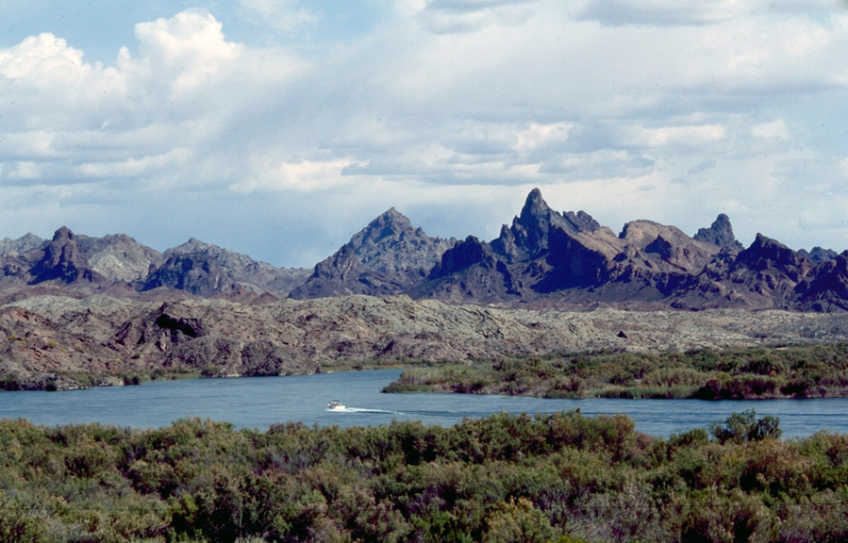
Years later, when cataloging Dick’s negative collection, I discovered that he had been photographing the Mojave going back to the 1950s, as well as collecting stories about Amboy and the last famous owner of the cafe, Buster Burris. I met Buster as well in the ’70s, but being a novice desert explorer, I did not know the significance or history of Amboy, the cafe and owner, or the nostalgia surrounding old Route 66.
Back to our journey. Driving through Needles and crossing the Colorado River, we pulled off to a road next to Santa Fe’s tracks where Dick had spotted a man working and asked him if any trains were coming. He said he thought one was due in about 20 minutes. We crossed back over to the Moab exit and drove to the bank of the Colorado, where the Santa Fe Railroad Bridge crossed. This was another memorable location because again my brain was in danger of being cooked. If you’ve ever had the occasion to be parked along the Colorado River in the summer, you’ll understand. By now, I was traveling in shorts, a sleeveless T-shirt and a large hat.
I grabbed my photo gear out of the back of the van, hoping to find the perfect location on the edge of the river bank. I set up my camera on a tripod and aimed it towards the railroad bridge. With the sun beating down, I hovered over my camera to shield it from the hot sun and waited — nothing came. Finally, I took my hat off, covered the camera with it and walked back to the van for a water jug and proceeded to pour the cool water over my head. I don’t know what Dick thought, but I noticed he seemed to tolerate extremes in temperatures whether it was a blizzard in Donner Pass or standing on the banks of the Colorado in summer. I sat down inside the open sliding van door to wait. Minutes ticked away and began to turn into hours, during which time I had retrieved my camera from the baking sun. We waited and waited. Dick was not one to give up on an approaching train just because it was not on time. He would wait until it showed, even if it took all day. Luckily, it was only four hours. (I say that with a slight grimace.) At last, we saw the yellow nose of a Santa Fe locomotive approaching the far side of the river and bridge. The setting was spectacular, baking sun and all; we both took many more photographs than we probably needed. After it passed, we continued our trip eastward through Arizona and back around to Northern California.
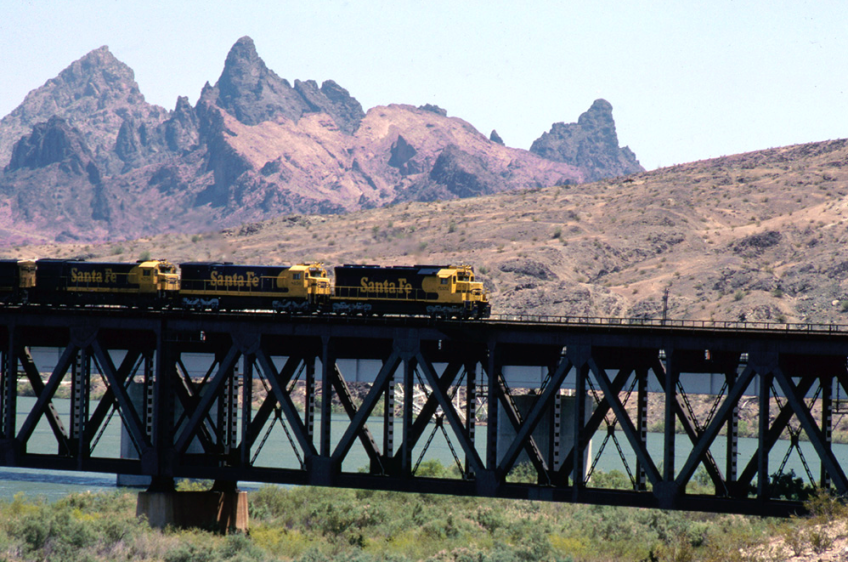
Dick and I married in November 1984 and continued to travel all over the United States on photography assignments and for ourselves until 1999, when it became apparent that his memory was slipping. He was diagnosed with Alzheimer’s in 2000. We still had so many more places to see and stories yet to tell.

On March 25, 2012, we made one more trip to “Mars” together and with close friends and family, I scattered Dick’s ashes in the Mojave Desert just as he requested years before.

Don't bury me in any Forest Lawn,
or Eternal Acres.
Toss my ashes out into the desert around Ash Hill.
Let the wind behind the Santa Fe’s eastbound hotshots
pull me off toward Amboy and Cadiz.
Let me take one hundred years to know this desert.
--Richard Steinheimer 1982
Top Image: Aerial photography of the Mojave Desert | Carson van Tol / Unsplash




